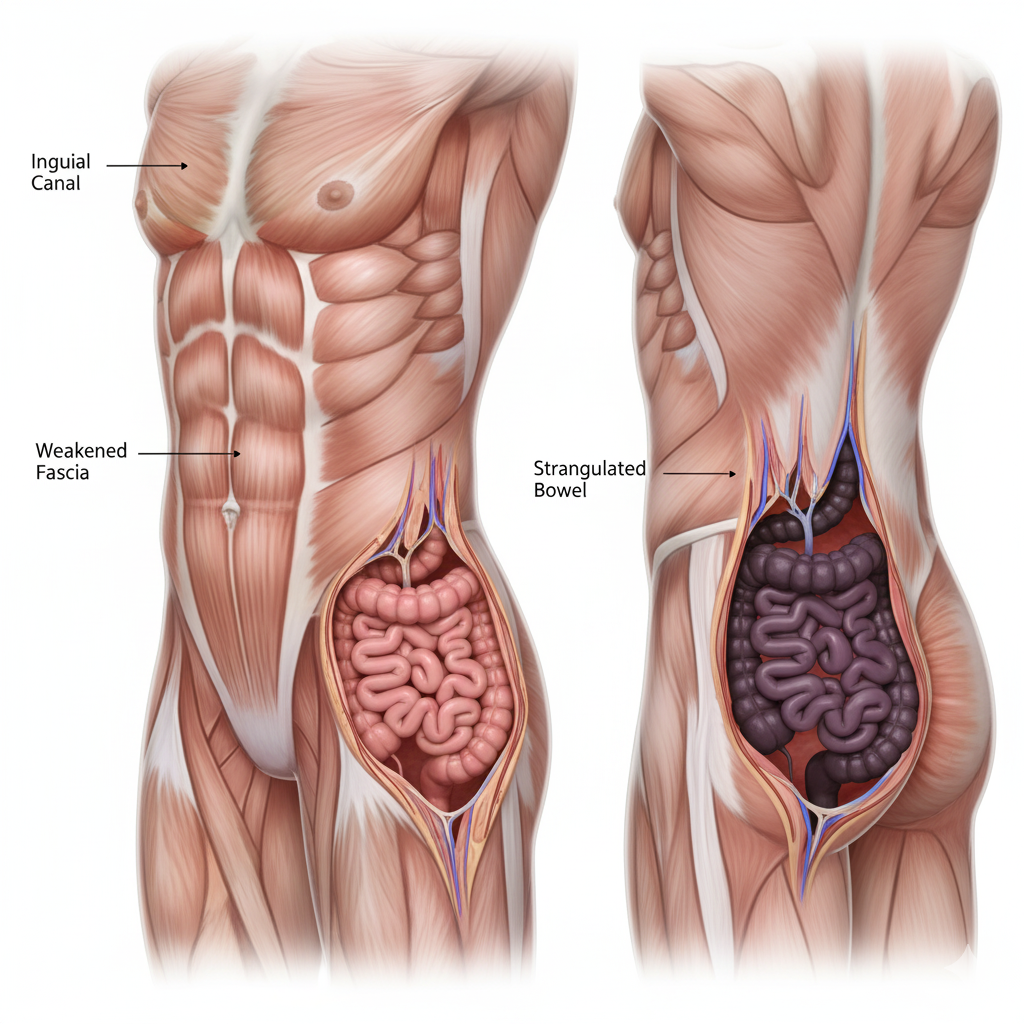Hernias are far more common than many people realize, affecting millions globally each year. While often underestimated, this condition—which occurs when internal pressure exceeds the strength of the abdominal wall and forces tissue outward—is not one that will resolve on its own. In fact, delaying treatment can dramatically increase the risk of life-threatening complications.

What is a Hernia and Where Does it Occur?
A hernia develops when an organ or fatty tissue pushes through a weak spot in the surrounding muscle or connective tissue (fascia). This typically results in a noticeable bulge or lump in the affected area, often the abdomen or groin.
The most common types include:
- Inguinal Hernias: Occurring in the groin area.
- Umbilical Hernias: Occurring near the navel.
While some hernias may be asymptomatic, others cause discomfort or pain that worsens with physical activity, coughing, or heavy lifting.
The Critical Danger of Delay
Consultant surgeon Dr. Soon Yuen highlights that leaving a hernia untreated poses significant risks. Approximately 5% of patients face a severe complication known as incarceration or strangulation.
This occurs when the intestine or other tissue becomes trapped and cannot be pushed back into place.
- Incarceration: The tissue is trapped, causing obstruction and potentially intense pain.
- Strangulation: This is a medical emergency. The blood supply to the trapped tissue is cut off, leading to the rapid death of the tissue (necrosis). Symptoms include severe pain, nausea, and vomiting.
If a hernia strangulates, it requires complex emergency surgical interventions which carry higher risks and a longer recovery time than planned repair. Furthermore, a long-neglected hernia may increase in size, making the eventual surgery more challenging regardless of whether it strangulates.
Treatment Options: Minimally Invasive is Key
Treatment for a hernia is tailored to the patient, but the overall consensus is that surgical repair is usually necessary because the condition does not heal naturally.
- Observation: Small, asymptomatic hernias without immediate risk may sometimes be monitored, but this is less common for hernias that are growing or causing symptoms.
- Surgical Repair: Surgery involves repairing the weak spot, typically using stitches or synthetic mesh.
Modern surgery favors techniques that minimize recovery time:
- Laparoscopic or Single-Port Surgery: These minimally invasive techniques use small incisions, which reduce scarring, pain, and recovery time. With single-port surgery—involving just one small incision—many patients can go home the same day and resume daily activities within three to seven days, often without requiring strong painkillers.
- Open Surgery: This remains an option for very large or complex cases, requiring a larger incision.
Seeking medical attention early dramatically improves recovery outcomes and helps minimize recurrence rates. By understanding and actively participating in their care plan, patients can ensure the best possible prognosis.
Leave a Reply